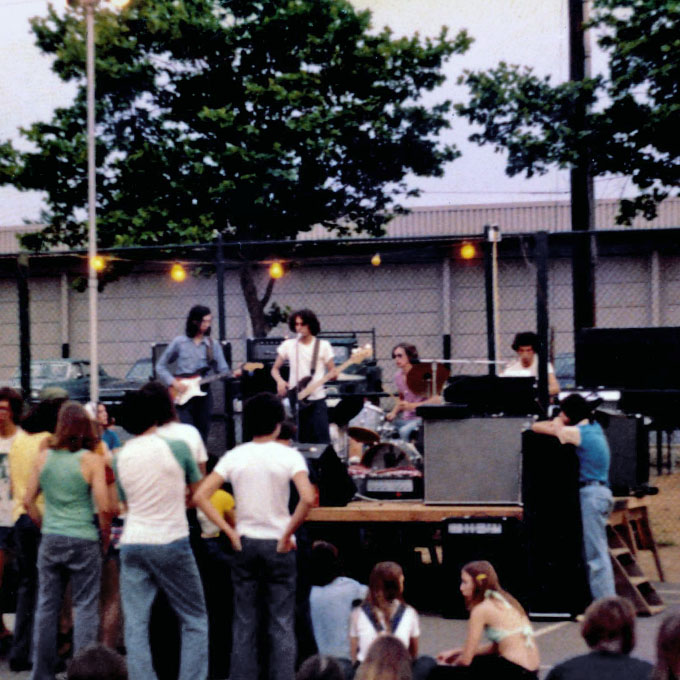The Story of Mortimer Snerd
As recalled by Larry Bogush
The starting point of this story is a little unclear. My recollection goes like this: I was playing drums and had been in bands since 6th grade. The Beatles may have gotten me interested in music, but it was the Monkees that got me motivated to play an instrument and start a band.
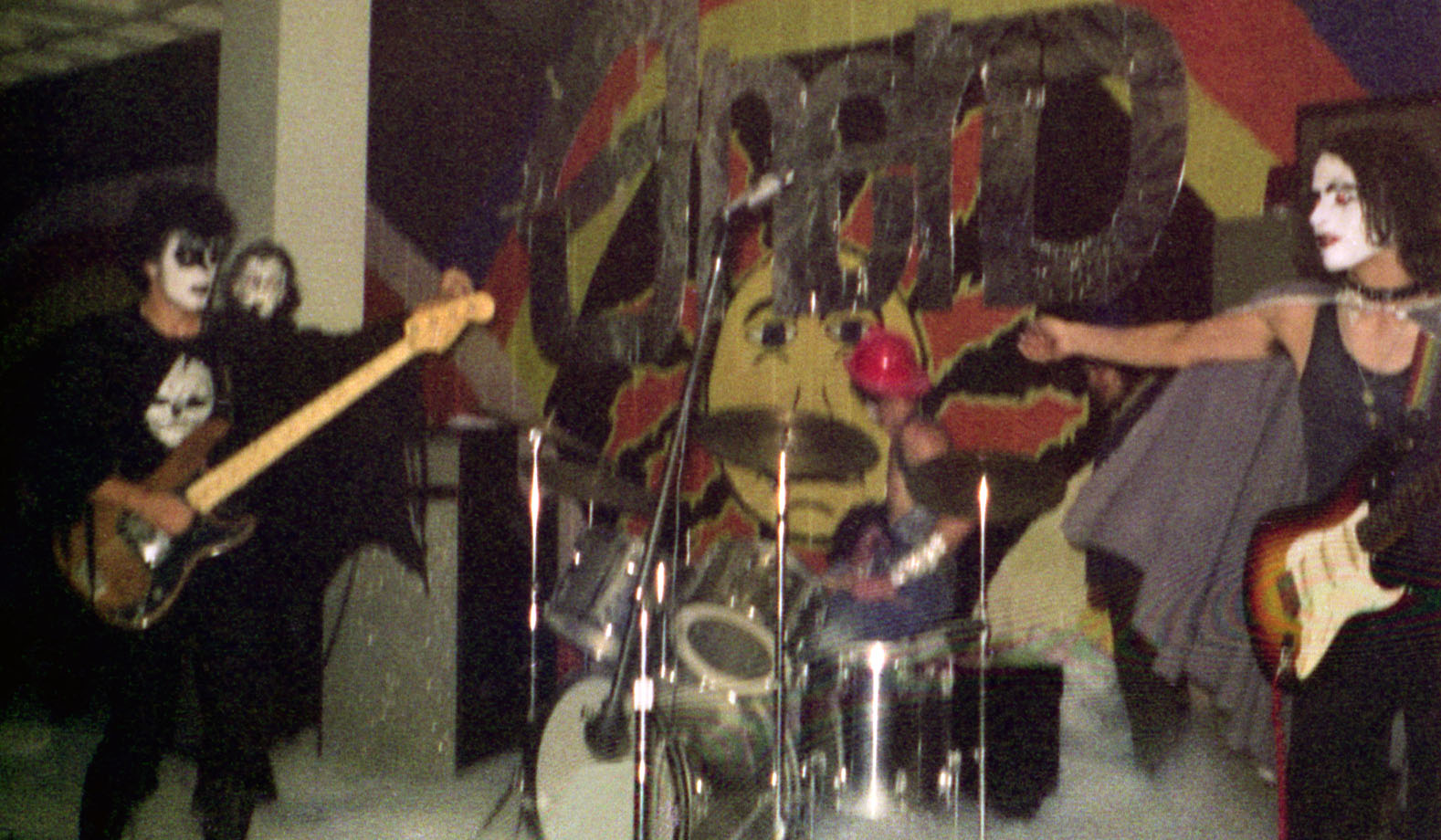
I knew Bernie since childhood. In fact, I think I was 5 years old when we first met. Anyway, Bernie decided to learn to play guitar and in a short period of time, became very good at it. At the time I was in a band with a couple of neighborhood guys, Koz and Max. I think the band was called ‘More to Come.’ We talked Bernie into jamming with us and it clicked. We practiced in my parent’s garage. On warm days we would open up the garage doors and play as loud as we could and as you could imagine we would attract the kids in the neighborhood. So, each practice was a mini show. That’s about the farthest this band went. But through this band we met David Plewa, a kid from down the street who also played guitar and had a nice cherry red single pickup Gibson SG.
‘More to Come’ started to fall apart so Bernie and I started jamming with Dave. Before long we had the makings of a band. Our repertoire consisted mainly of Stones songs. Although we thought this was cool, the fact was we were unable to do anything more complicated. We started jamming with others in an attempt to complete the group. At one rehearsal, Bernie happened to mention that he met a good bass player who could also sing. I asked Bernie if he could get this guy to come and jam with us. Bernie made the arrangements. This is how I met Tom Zebro.
Tom was a gifted bassist who almost immediately took us to another level. We now had a band: Bernie on lead guitar, Dave on rhythm and vocals, Tom on bass and lead vocals, and me on drums. We got a set list of thirty songs, half of which were Stones songs. I started looking for work and landed our first paying gig at a Catholic CYO summer dance. This was July of 1973. Although we thought we were good, we were mediocre at best. We needed help. We needed a gimmick, a distraction. This distraction came in the form of Mark Yurewicz. Mark was this guy that I would see around the neighborhood. We would always have these in-depth music conversations. At one point I asked him if he would be interested in joining the band and told him what we would expect him to do. Even though he could not play an instrument, he agreed. I mentioned this to the other guys, and no one seemed to mind much. On the day of the gig, we were unsure if Mark would even show up, but he did.
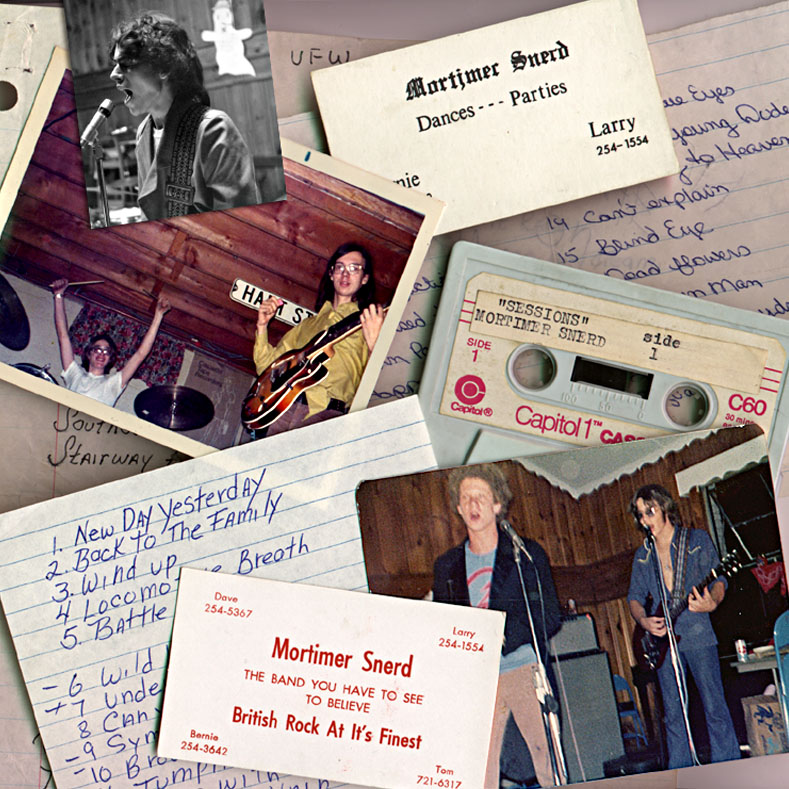
He walked in the hall with these knee-high red converse sneakers and a tuxedo jacket with tails. He also carried a bag that had a tambourine, tin whistle, harmonica, a bucket of wildflowers and a bag of confetti. As we started to play, he began jumping around the stage, running into the audience, and generally just doing these wild things. We had our diversion. So what if we were sometimes out of tune, or messed up a song or didn’t end a song together—nobody cared! We were a hit with the kids!
The regular Joes and Janes thought we were cool, but the musicians had a field day with us. In fact, a musician friend of mine called us the ‘band that played different songs at the same time.’
We earned our first paycheck: $125.00. The next day we got mixed reviews. Our friends were kind to us. The regular Joes and Janes thought we were cool, but the musicians had a field day with us. In fact, a musician friend of mine called us the ‘band that played different songs at the same time.’ The truth is it didn’t matter. We were able to book three other jobs based upon the CYO performance. And we booked many more jobs in the following six months.
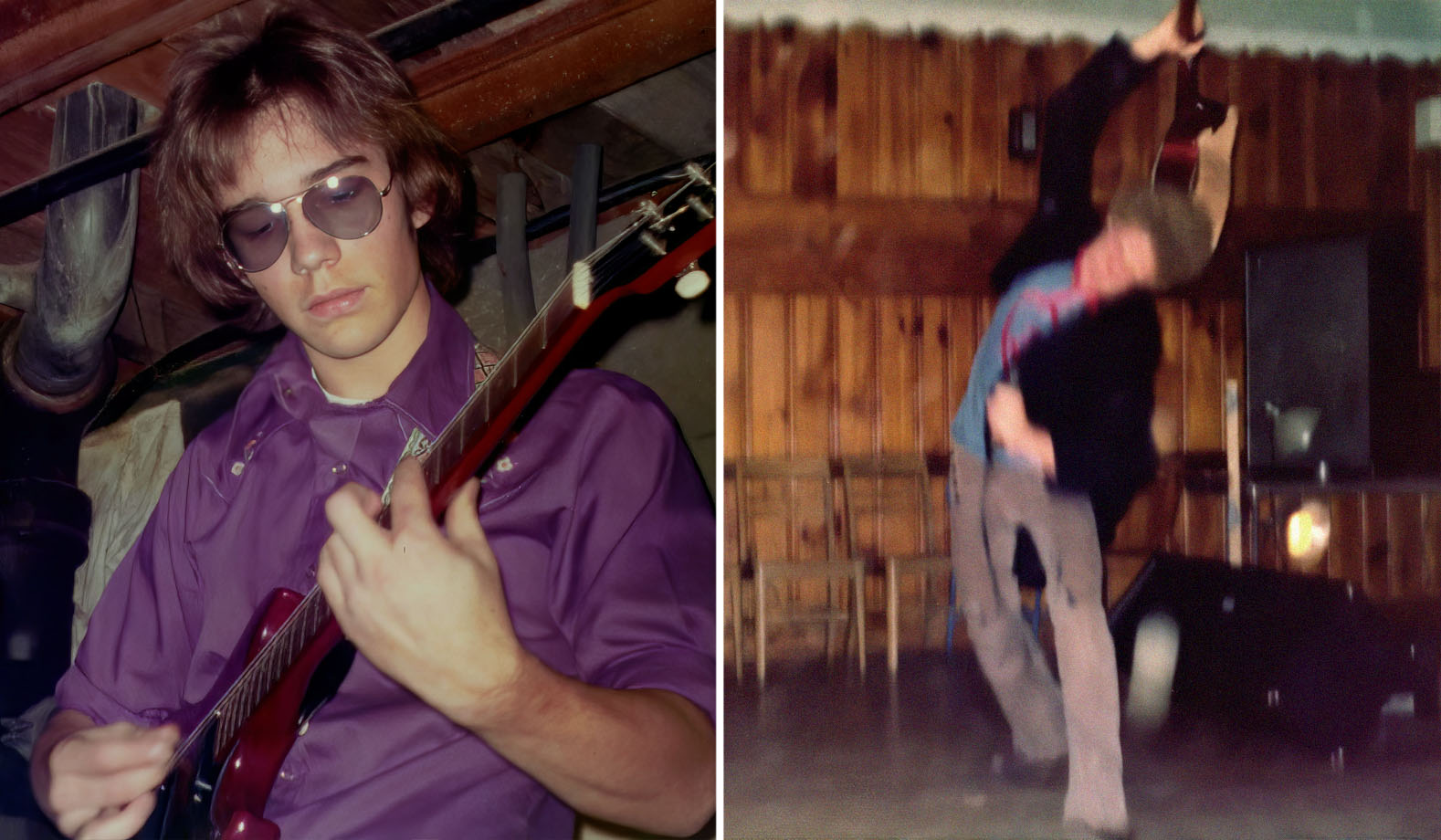
As time went on, we became a little more proficient with our instruments and we started choosing more musically complicated songs. Dave started to drift from us. He now had a girlfriend and was getting into different music that deviated from ‘our style.’ He also wanted to sing more. It was also the consensus that Mark was becoming a negative distraction. Bernie, Tom, and I agreed we must make a break from the other two guys and determined it was my duty to tell them. Painfully, it was done. We did one last gig and called it, ‘Goodbye Snerd.’ During all this Tom mentioned that he knew a keyboard player/vocalist who may be interested in joining the band. We felt that a keyboard player and another singer would add more dimension to the group. Tom spoke to this guy and coerced him into coming to the ‘Goodbye Snerd’ show. This is how we met Mark Merriman.
[An amusing side note: when Mark came to the gig, he apparently thought I sucked (one of many people who thought the same) and that I was one of the guys getting replaced. That was the end of the first generation of Mortimer Snerd.]
Some good things came from this period. One: We developed the singing telephone. It was my idea, but Tommy technically engineered it. By placing a cheap microphone into a telephone hand set we were able to recreate the Ian Anderson tone of voice in the middle of “Aqualung.”—an effect that lasted well into the next generation Snerd. Two: Tom and I started writing together and penned a song called “Torn Pages,” a seven-minute epic that actually wasn’t that bad considering two kids wrote it. Three: A stronger bond formed amongst Tom, Bernie, and I.
Anyway, the new line up started rehearsing immediately after the ‘Goodbye’ show and in four short months we had an entirely different set list and were ready to hit the road again. Our choice of songs became more complicated. Gone were the Stones and Slade songs. In were the Genesis, Uriah Heep, ELP, Deep Purple, Bowie, Mott, Bad Co. and Led Zeppelin numbers. We now began getting recognition from our musician peers. We were no longer the ‘band that played different songs at the same time.’ We got tighter as a group and better with our instruments. Mark and Tom’s harmonies greatly improved, and our stage shows became a little more elaborate. We went from the underdogs to the favorites. We were connecting with the audiences. The other bands were copying us.
Mortimer Snerd was larger than any one member. Each of us contributed to the ‘persona’ of the band. Mark was the ‘Charismatic One.’ He had control of the audience. Tom was the ‘Cute One.’ He had all the girls swooning. Bernie was the ‘Guitar Idol.’ All the kids wanted to learn to play like him. And I was the ‘Quiet One,’ the backbeat, the strength of the group. On stage I was nearly invisible to the crowd.
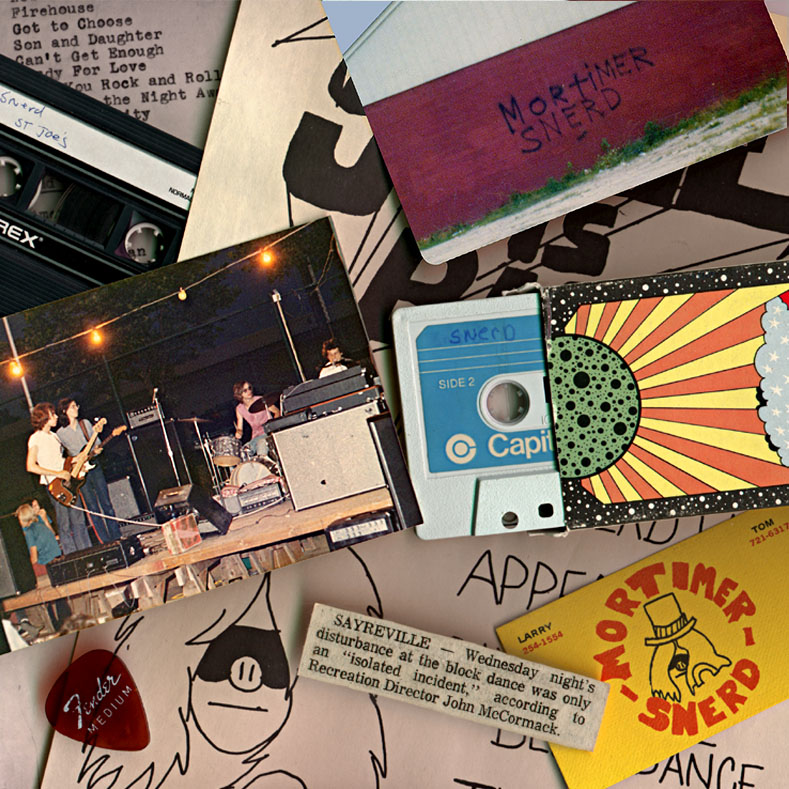
Each time we played we got more jobs, our audience grew, and our pay rate increased. In fact, towards the end, we were booking mini tours. Every show over the next year and a half had a notable moment or two. What I believe separated us from the other bands at that time was our marketing campaigns. When we were given a gig, we spent a lot of time on advertising. Bernie and I would determine where and how many places we wanted to advertise in and then we would hand draw posters that would be colored by Jim Hogya. Then we would go to all the stores and hang the posters up. We would also make flyers that wound up stapled to phone poles all over town.
During the summer, we would even make billboards and erect them in high traffic areas. With some shows we even created programs. A lot of thought went into these marketing promotions. And to think we were just kids ages 15-17. Our uniqueness was also apparent in our stage shows. We felt that playing our instruments well was a given. The audience deserved more. So, we were always thinking of ways to entertain and distance us from the other bands. For example, we used sound effects in some numbers. We combined Led Zeppelin’s “Thank You” with The Who’s “The Real Me.” During the keyboard wrap of “Thank You,” we played the sound effect of seagulls flying overhead which segued into the sound of ocean waves crashing on the beach which led us into “The Real Me,” with Mark's opening, “Can you see the real me…can ya, can ya?”
One tour we would open the second set with Pink Floyd’s “Money,” which started with the cash register sound effects. We were even able to coerce this 50-year-old guy who played sax to rehearse and come onstage with us. His name…‘Hurricane’ Hilton Nelson—a great and hip guy! The crowd loved him, and he was as proud as a peacock that night. God bless you, Hilton! There was also a time when we opened the third set with Pink Floyds’ “Time”/“Breathe.” We would play the “On The Run” piece from Dark Side Of The Moon and keep the recording running through the beginning of “Time.” We would pick it up on the drum fill prior to the first verse.
We were also big on doing medleys or run-ins. This wasn’t that common at the time. For example, we did The Who’s “Pure and Easy,” ran it into “Violence” by Mott, and ended it with “The Knife” by Genesis. Or we would do the ultra-hip (or ultra-geeky, depending on perspective) “American Pie”/“Golden Age of Rock and Roll” medley. Mark always felt uncomfortable doing this, but it was cool. We also did run-ins of “Golden Age of Rock and Roll” and “All the Way From Memphis” as well as “1984” and “Rebel Rebel.”
We happened on an import copy of the first Bad Co. album four months before it was released and played in the United States. We were doing “Can’t Get Enough” before anyone else ever heard it! We soon devoured that album and in a short period of time added “Ready for Love,” “Don’t Let Me Down” and “Bad Co.” to the set list. This was our standard operating procedure. We were doing Queen songs the minute their first album came out and KISS when all they were was hype! (Has that changed?) And the list goes on.
We also employed theatrical effects during our shows. When budget allowed, we had smoke machines and flash pots—all homemade. We would use these effects to visually punctuate our songs. We also created props. For example, on the Pink Floyd shows we built a 6 foot rotating Moon that was covered with aluminum foil and broken glass. When the light would hit the glass and foil it would refract the lighting. We also had a large 6'x12' Snerd logo created, that would hang behind us while we performed. Again, not bad for kids.
You would think all these experiences would motivate us. It didn’t. What we didn’t know was that Tommy was disgruntled and wanted out. He called for a meeting and announced his resignation. We had jobs lined up…they were all gone! The ‘Classic Snerd’ lineup was over! Sure, we had our disagreements and arguments. I think everyone threatened to quit at one point or another. But we were family, and those things happen when you’re that close to each other.
At one time, Jimmy Hogya and I thought it would be cool if we recorded an entire tour with the intent on making an audio documentary of the band. We determined we would start with the St. Joe’s event. Well, we recorded and listened to hour after hour of recorded dialogue. The recordings were vile and totally unusable. In these recordings it was established that we were tired of each other. If Tom and Bernie were in a room, the conversation turned to Mark and me being the dicks of the band. If Mark and Tommy were in the room, Bernie and I would be the dicks, and so on. We had problems. Jimmy and I decided it would be best to abandon the project and destroy the tapes, as they would only cause to expedite the break-up of the band (we calculate two months earlier than it actually did).
After Tom left the group, the three remaining members decided to carry on. We decided to audition other bass players. Nothing clicked. Mark suggested he take on bass duties and we go out as a three-piece band. We agreed and we started rehearsing. It took another four months or so but we learned an entire new set list. We were ready! We booked a job at OLV (the venue of our first gig ever) and a block dance. Before that we did a party at a friend of Jimmy’s. Of all the shows, the OLV gig stands out as my personal favorite. We had an incredible set list including “Whole Lotta Love”/“Moby Dick” and “Liar” by Queen.
In retrospect I loved this version of Snerd and it was my all-time favorite. We all had to contribute, there was no kicking back. We finally worked for a living. Unfortunately, I was the only one who held that opinion. After our third gig as a three-piece unit, Bernie announced he had enough. I will always remember that we were going to learn “Leaving you” by Bad Co. at that rehearsal. Mark and I were too tired to audition others and we parted ways. Mortimer Snerd was officially finished in August 1977.
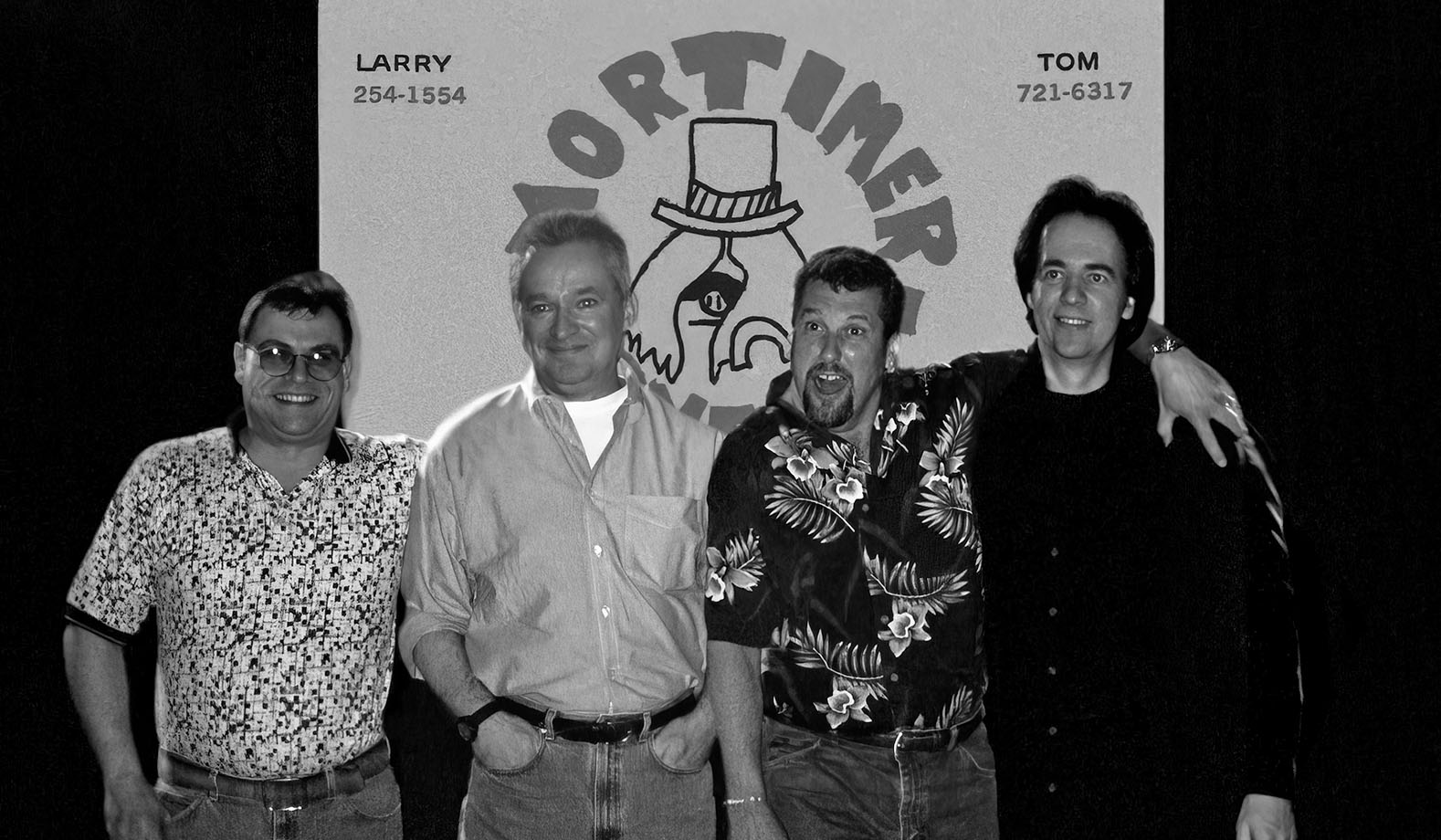
Who knows what could have happened if we stuck it out, but I guess that is the story of many bands. We could have been contenders. Instead, we grew up, had some near misses and wound up joining society. No Regrets! Thank you Bernie, Tom, and Mark. You will always be in my memories (in a good way) as long as I live!
Postscript: After Snerd, Bernie went on to join Tommy’s band, South Pine and I started writing and recording songs with Mark. Years later, I joined a bar band called Whisper and when their guitar player quit, I recommended Mark and had the privilege of working with him again for another year or so.
Ian Hunter once wrote, “Rock and Roll is a loser’s game.” With all due respect, I disagree. We didn’t become famous. But we did forge long lasting friendships, had a good time doing so, have wonderful memories, kept out of trouble, and entertained people while having fun. Thank you all for the opportunity!
Making KISStory
When Mortimer Snerd played a Sayreville Junior High School dance dressed like the band KISS in 1975, they had no idea that 31 years later, they would be officially named “first KISS tribute band” by Paul Stanley of KISS! But that’s exactly what happened.
When Bernie Hogya, Larry Bogush, Mark Merriman, and Tom Zebro first created a website for Mortimer Snerd in 2006, it included a story of the band’s Halloween KISS show.
Bernie Hogya had worked with KISS in the past during a photo shoot for the “Milk Moustache” advertisements—Bernie is on the creative team that developed the highly successful milk campaign. Through this association, Bernie became friends with Ken Sharp, author of KISS: Behind the Mask: The Official Authorized Biography. As the building of the Mortimer Snerd website progressed, Bernie, sifting through volumes of archival photos came across the Snerd/KISS shots and jokingly sent them to Ken. When questioned about the date of the photos, Ken acknowledged that Mortimer Snerd was probably the first ever KISS tribute band.
This statement led to an interview in The South Amboy/Sayreville Times, which was read by Paul Stanley of KISS, who decreed that Mortimer Snerd was, in fact, the “first KISS tribute band.” Paul Stanley, then approved the article to run on the official KISS website for the entire month of September 2006.
Since that posting, the Mortimer Snerd story appeared on KISS fan club websites around the world, including Italy, the Netherlands, and Russia. Back home, The Suburban, a local Middlesex County newspaper, ran their own story about the Mortimer Snerd/KISS performance. That story was picked up by The Independent, a local Monmouth County newspaper. The South Amboy/Sayreville Times also did a follow-up story.
In June 2010, Mortimer Snerd got together for a reunion, to "see if we can still play," according to lead singer Mark Merriman. They did a handful of Snerd classics, including a couple of KISS songs to stir memories of their historic 1975 performance. Since then, the Mortimer Snerd website has been hit thousands of times. People from all over the world have taken interest in the “Mortimer Snerd story.”
The fact is Mortimer Snerd was an innovative band that inspired many other local musicians, some of which went on to fame and fortune. And now, some forthy plus years later, Mortimer Snerd is getting recognition for their antics and now officially hold a place in rock and roll KISStory.
In Depth
-
Shows to Remember
Each summer the borough of Sayreville had summer concerts called block dances in the parks. It was policy to give one show per band. Through negotiations we were able to land two shows per summer. We also requested and got a larger stage. The standard stage for a band was 12'x12'x32'. Our stages were 12'x24'x32'. No other band got this consideration. Because of the location of the event, the sound was never good (as testament from the recordings of those shows). But on a perfect summer evening with a good crowd, it was magic. We also had the notoriety of playing during one of the largest riots in block dance history. Apparently, there was some type of gang war. In those days we just beat the hell out of each other. We never considered shooting anyone. There was also a time when we had the idea of shooting off skyrockets during Bad Co.’s “Shooting Star.” We prepped Jim DeMaio and Sam Sirna on the cue, the time came and there were no rockets. Afterwards we found out that the police detained Jim and Sam and the rockets were confiscated. This did not deter us. For the next block dance, we got Jimmy Hogya and Bob Morgan to agree to shoot the rockets off. They succeeded in their endeavor but were chased by the police and almost caught. The effect was pretty neat.
-
Hoffman High School
Hoffman High School was monumental for us. It represented our first out-of-town gig. We had a killer set planned. That evening the hall was filled. 500+ people. Somewhere in the middle of the second set and as I recall during “Twisting the Night Away,” a riot broke out that turned pretty violent; far worse than the block dance event. The show was immediately halted. We never returned to that venue.
-
Frog Hollow
Frog Hollow was the Morgan version of the Sayreville block dance. The event took place at an outdoor swim club. The stage faced the bay, and the sound was most incredible! I don’t believe we ever sounded so good. As always, I would record every show we did, and the ones done at Frog Hollow were the best sounding. In fact, by mistake one show was recorded in true stereo. The downside was the show was recorded onto 8-track and the master was never copied and eventually the original recording was destroyed. This particular show had many of our ‘Epic’ songs: “Circle of Hands” and “Sunrise” by Uriah Heep, “Watcher Of The Skies” by Genesis, “Battlefields” by ELP, “Burn” by Deep Purple, “Sylvia” by Focus plus our standards, “Rebel Rebel,” “All The Young Dudes” and “Smoke on the Water.” Great show!
-
St. Joseph‘s High School
The St. Joe’s show was probably our best show, and unfortunately the beginning of the end of the ‘Classic Snerd.’ It was a period where we were practicing and playing a lot and frequently getting on each other’s nerves. We were also reaping the rewards of being in the band: we had a little money, outside friends and girlfriends. In short, there were distractions. This particular night we played to our largest crowd ever, approximately 1,200 kids. And they loved us! We owned that venue that night. We even did two encores. I never mentioned this before but there is an advantage to being the drummer. You get to see two shows: The audience and your band mates. That night it seemed that Mark and Tom were continually trying to one up each other. It was quite the spectacle. It was apparent that our egos were getting the best of us. I guess it was inevitable. On a bright side, a good recording came from that evening.
-
South River High School
The word of our St. Joe’s performance spread like wildfire, and we were contacted by venues in other towns, which was unheard of for those times. One day we received a call from one Tommy Thompson and Lenny Walsh, the president and vice president of South River High School’s Senior Class. They claimed they heard of the St. Joe’s show and wanted us to play their school. We crossed over! South River was the natural rival of Sayreville. The big football game of the year was the Sayreville/South River game and there was always a fracas. Going to South River was the equivalent to going to South Africa during the days of apartheid (in small town speak). You just didn’t do it. Well, we did. And it was a great show. We had great sets planned and many new tunes. The turnout was large (about 450+) and the show was good. We were a little disappointed that the crowd was not as animated as we wished they would be. We worked our asses off and we were only able to get them to a certain point. After the show, we spoke at length with Tommy and Lenny almost apologizing for not working the crowd well enough. Their reply was, “Are you kidding? They loved you! If they didn’t, they would tear you apart!” That was comforting to hear afterwards. After that, I formed a bond with Tommy and Lenny.
-
Saint Mary’s High School
The Saint Mary’s, South Amboy shows were always a highlight for me. This venue was similar to Frog Hollow inasmuch as I felt we always sounded great there. The room had this great natural reverb that always made the drums sound big, and since my kit was never miked I appreciated all the help I could get. This was Mark’s School and when we played there, he was the KING! We still have great recordings of these shows.
-
Sayreville Junior High School
The Sayreville Jr. High show stands out as a very memorable event. We booked a job close to Halloween and we thought what would be more appropriate than to do a KISS show that evening? The band agreed and we sold the idea to the school. Instead of doing the traditional three 45-minute sets with 15-minute breaks in between, we did a 90-minute set, and then took a ½ hour break where we donned the KISS makeup, and did a 1-hour KISS show. We invited Tommy and Lenny to the show with hope it would generate more work (little did we know). The KISS segment was mass hysteria! The kids went wild! We did the whole bit, KISS songs, smoke and flash pots! Mark, our Gene Simmons character, even did the flames and spit blood. It was a smash! The next day, we got calls from other schools including South River asking us to do the KISS show. And they were willing to pay more! Righteous! After the Jr. High, we had a gig scheduled at the High School. We had played there before to a somewhat ambivalent crowd of 300+ kids. This particular evening the place sold out. There was a capacity crowd 600+ people. We could do no wrong. Mark had the audience in the palm of his hand. Tommy did his magic with the girls and Bernie had all the guitar wanna-bes studying his every move. It was a magical night. I kept being asked, “How come you’re not doing the KISS show here?” We were in demand!
-
Our Choice of Music
Some of my favorite recollections came in the form of our music selection. For example, I had this mentor friend who turned me on to a group called Dust. For the record, this band consisted of Ritchie Wise, who went on to be a renowned producer (credits include KISS’ Hotter than Hell). A 17-year-old Kenny Aaronson, a bass god who went on to play with many great bands including Rick Derringer, Billy Squire and (sorry to say), John Eddy. Hey, it's a gig! And Marc Bell AKA Marky Ramone. The song was called “Pull Away.” I played it for the group and soon it became a permanent number in our repertoire. The song and group were very underground. Retrospectively we found out that other local bands learned and played the song live based on the way we played it. They also thought it was an original of ours (I wish). In fact, our choice of music vastly separated us from the other groups. It seemed, although not planned, we were always ahead of the curve. Jimmy Hogya once brought it to my attention that we always went for the hip and obscure over the Top 40. In thinking about it, he was right. While the other bands were doing “Rock and Roll Hoochie Coo,” we were doing “The Knife.” While the others were doing Doobie Brothers, we were doing Mott. We were doing stuff from Ziggy Stardust, the year it came out (thanks to Tom)—Bowie was way obscure at that time. Talk about hip. Dark Side Of The Moon came out in ’73 and we were doing “Money,” “Time,” “Brain Damage” and “Eclipse” in ’74.

